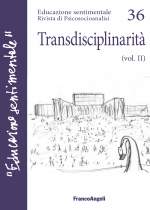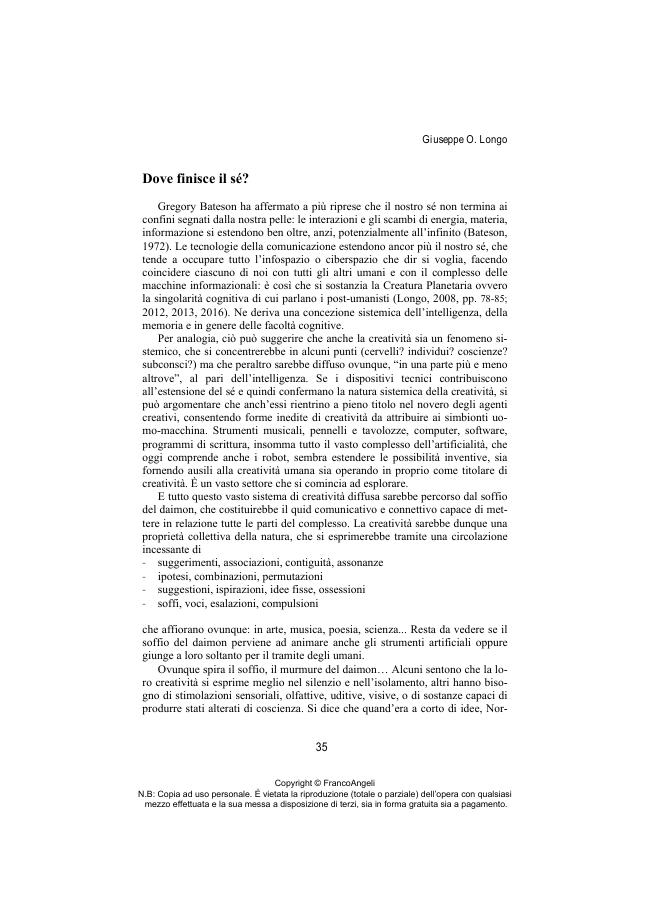Il soffio del dàimon : variazioni sulla creatività
P. 22-48
Le immagini (artistiche e scientifiche) che ci costruiamo della realtà obbediscono a "codici rappresentativi", che a lungo sono stati considerati "naturali"; ma ver-so l'inizio del Novecento si è creduto di scoprirne la sostanziale arbitrarietà: di qui un pullulare di rivoluzioni rappresentative in arte, in musica, in letteratura e fors'anche in fisica e in matematica.
Ma dopo questa esplosione di creatività nel dominio dei codici ci si è accorti che 1) esiste una sorta di "selezione naturale" dei codici rappresentativi basata sulla coevoluzione tra bio-fisiologia umana ed espressività dei codici e sulla compatibilità ed efficacia dei codici, per cui i codi-ci giunti fino a noi sono più robusti di quelli che si sono persi per strada (questa coevoluzione conferma il legame immersivo e sistemico tra noi e il resto della na-tura); 2) i codici rappresentativi non sono tutti sullo stesso piano: ve ne sono di più profondi e di più superficiali, e i primi richiamano il classico problema, affrontato tra gli altri da Eugene Wigner, dell'irragionevole efficacia della mate-matica nelle scienze naturali. Questo problema si articola in altri più specifici: perché alcuni pittori dipingono frattali pur ignorandone gli aspetti matematici? Perché fin dall'antichità architetti, pittori e musicisti hanno basato le loro opere sulla sezione aurea? [Testo dell'editore]
The artistic and scientific images that we construct to represent reality conform to "representative codes" that for a long time have been considered as "natural". However around the beginning of the twentieth century people thought to have discovered that such codes are fundamentally ar-bitrary. This gave rise to an outpouring of representative revolutions in art, mu-sic, literature and even in physics and mathematics.
But after that surge of crea-tivity in the domain of codes people realized that: 1) it exists a sort of "natural selection" of representative codes based on the co-evolution between human physiology and expressiveness of codes and on the compatibility and effective-ness of codes, to the effect that the codes that survived are stronger than those that went astray along the way (such co-evolution validates the systemic links be-tween us and the rest of nature). 2) not all representative codes have the same strength: some are more profound and some are more shallow. The former ones bring to mind the classic problem of the unreasonable effectiveness of mathemat-ics in the natural sciences, tackled among others by Eugene Wigner. This problem subdivides in other more specific questions: why some painters paint fractal im-ages although they ignore the mathematical structure of fractals? Why since an-cient times painters, architects and musicians have based their creations on the golden section? [Publisher's text]
Fait partie de
Educazione sentimentale : 36, 2, 2021-
Articles du même numéro (disponibles individuellement)
-
Informations
Code DOI : 10.3280/EDS2021-036004
ISSN: 2037-7649
KEYWORDS
- codice, gerarchia dei codici, rappresentazione matematica della natura, filosofia digitale, computer, letteratura combinatoria
- code(s), codes hierarchy, mathematical representation of nature, digi-tal philosophy, computer, literature and combinatorics



